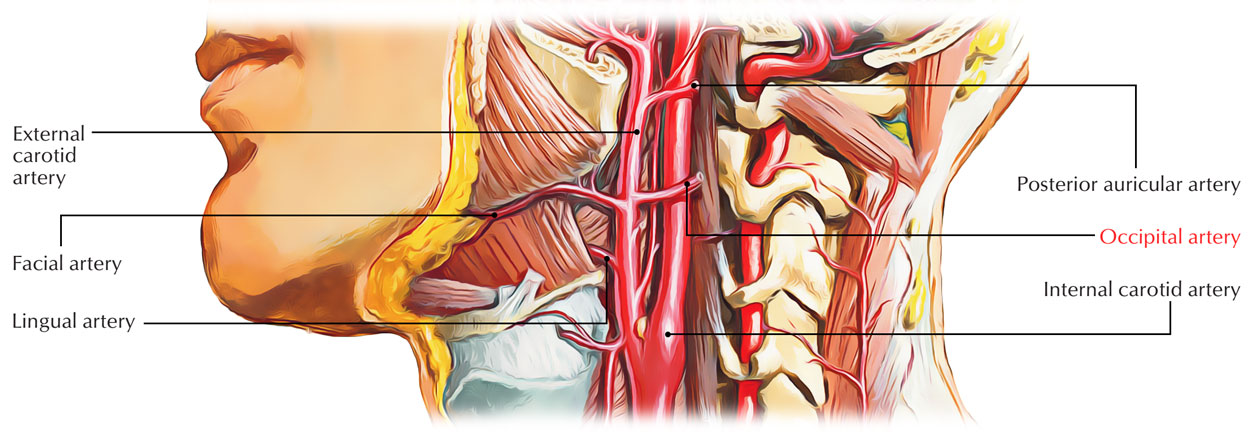The occipital artery arises from the posterior surface of the external carotid artery, and goes through Internal carotid artery Internal jugular vein, and vagus and accessory nerves.

Occipital Artery
Origin
The occipital artery arises from the posterior surface of the external carotid artery, in proportion to the angle of the mandible, and travels posteriorly and upwards, and is superficially traversed by the hypoglossal nerve.
Insertion
It is enclosed in the posterior belly of the digastricus and the stylohyoideus muscles at its beginning and the hypoglossal nerve coils around it from behind forward; higher up, it goes through
- Internal carotid artery
- Internal jugular vein
- Vagus and accessory nerves.
Course
It subsequently rises upwards towards the gap in the middle of the transverse process of the atlas along with the mastoid process of the temporal bone.
It then travels horizontally backward and is enclosed by:
- Sternocleidomastoideus
- splenius capitis
- Longissimus capitis
- digastricus
Located upon
- Rectus capitis lateralis
- Obliquus superior
- semispinalis capitis
It then alters its path and travels vertically upward, penetrates the fascia linking the cranial attachment of the trapezius and the sternocleidomastoideus, and ascends within a twisted course inside the superficial fascia of the scalp.
Here it divides into various branches, which get to the extent that of the vertex of the skull and also anastomose with the posterior auricular as well as superficial temporal arteries.
Branches
- Sternocleidomastoid branch
- Auricular branch
- Mastoid branch
- Descending branches
- Occipital branches
Function
- Muscular branches supply the digastric, stylohyoid, splenius, and longus capitis muscles.
- Sternocleidomastoid branch splits into upper and lower sections within the carotid triangle.
- The upper branch accompanies the accessory nerve to the sternocleidomastoid.
- The lower branch arises near the origin of the occipital artery before entering the sternocleidomastoid muscle.
- Auricular branch supplies the back of the ear.
- Meningeal branch supplies the dura mater in the posterior cranial fossa
- Descending branches go downwards on the posterior aspect of the neck, and splits into a superficial and deep portion
- Concluding part is escorted from the greater occipital nerve.

 (53 votes, average: 4.82 out of 5)
(53 votes, average: 4.82 out of 5)